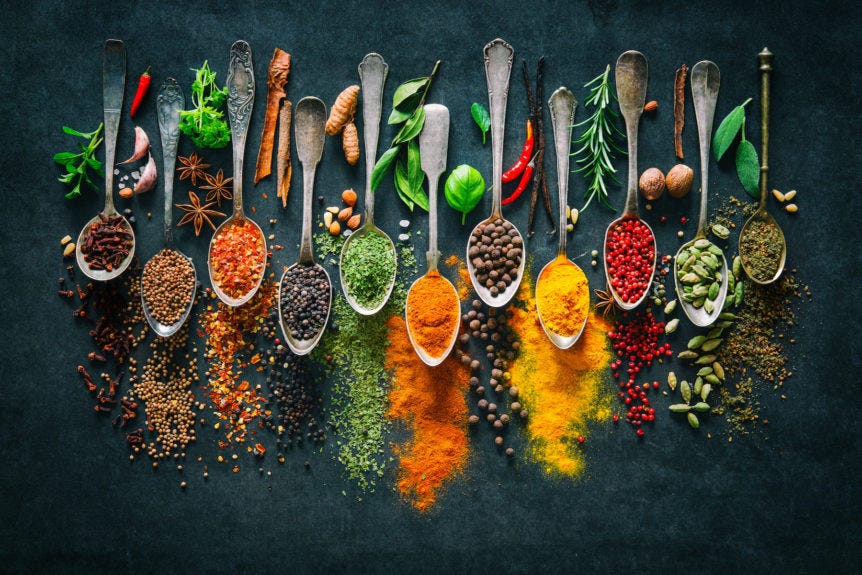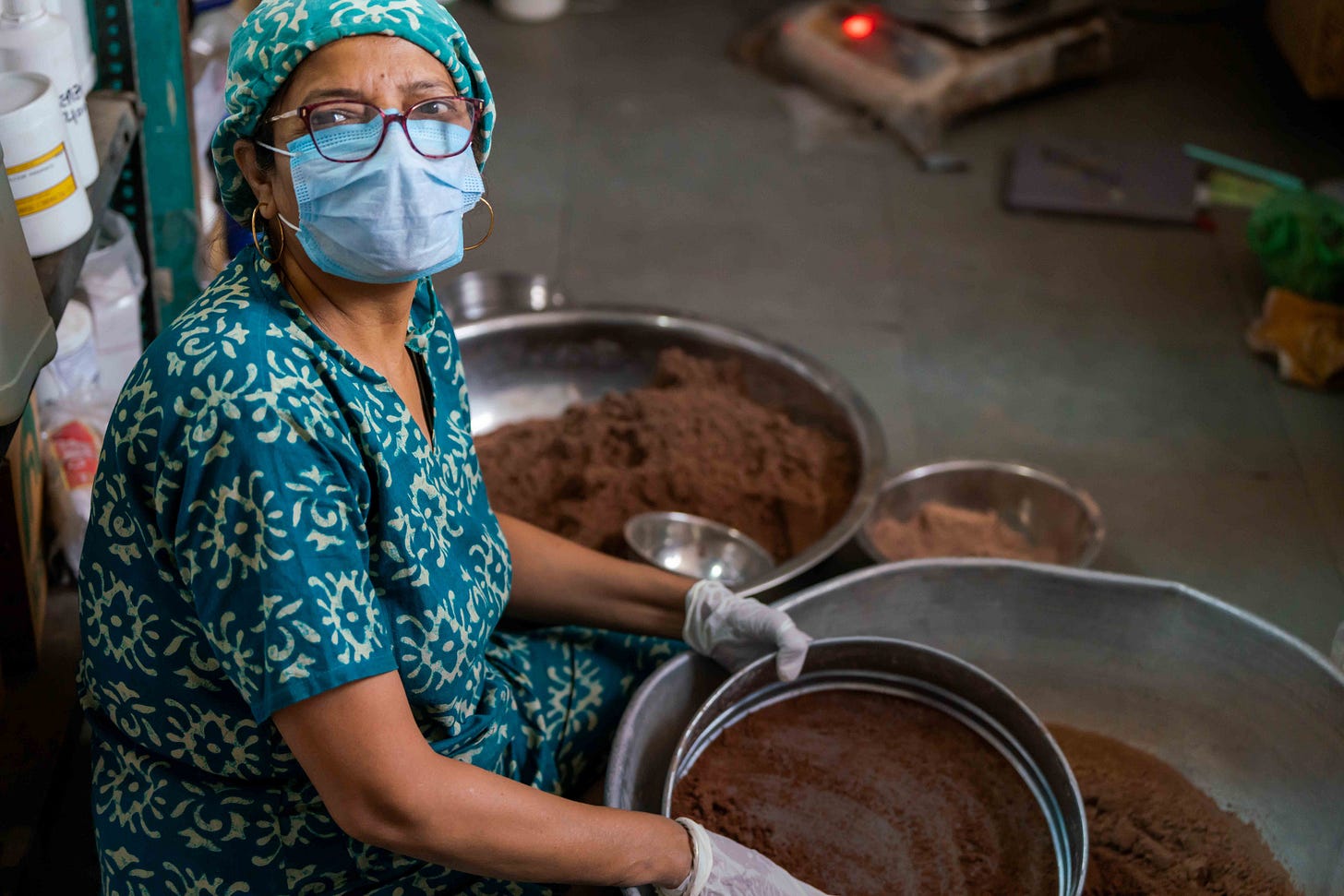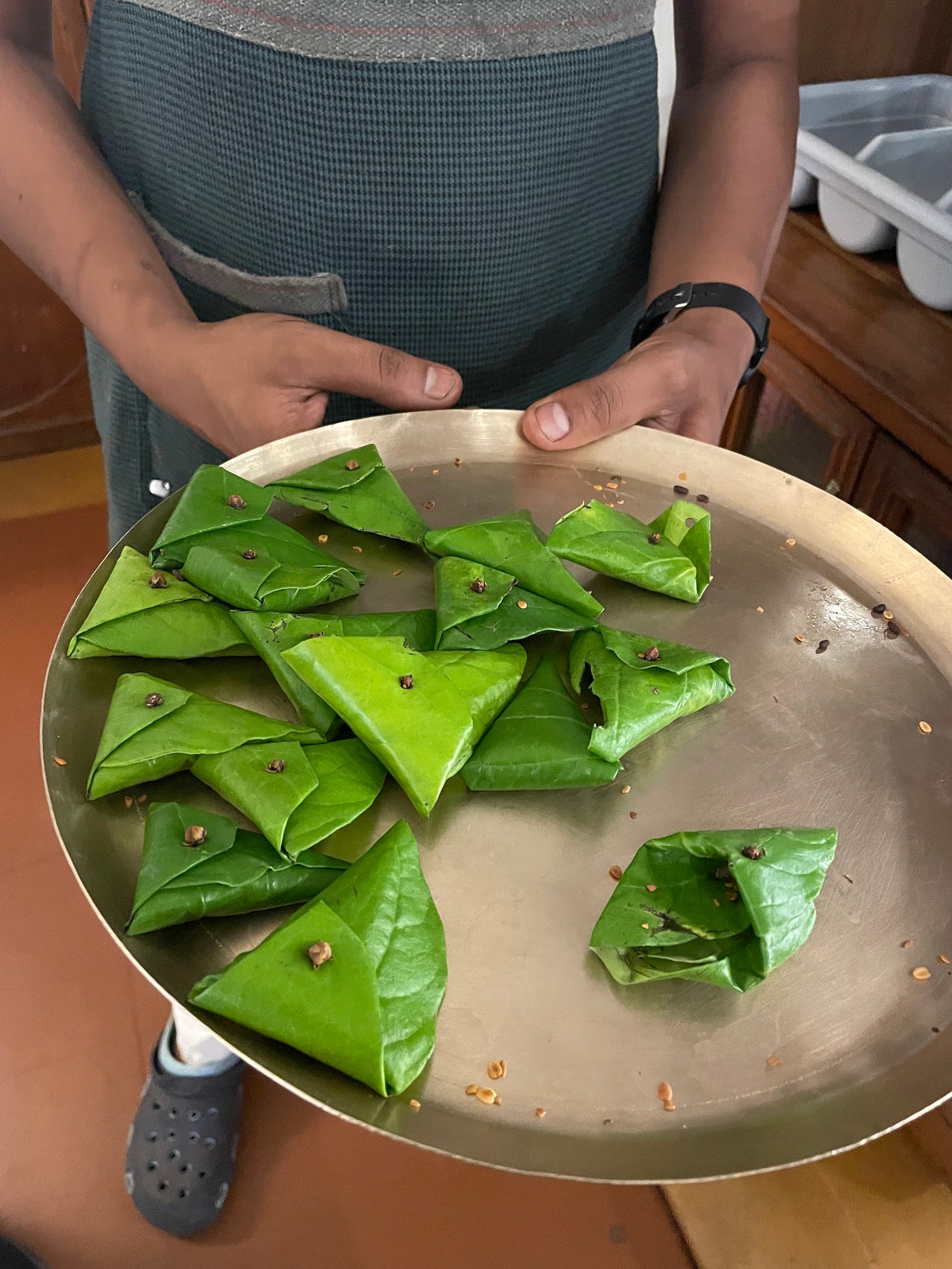What I Learned in India about Ayurvedic Medicine
Welcome to this week’s edition of Vitamin Z, a newsletter about health and wellness with 3,000+ subscribers. If you are new, you can join here.
In this issue:
Based on ancient Indian tradition, Ayurveda is a holistic, natural approach to physical and mental health
Ayurvedic herbs and spices are thought to protect the body from disease and offer a variety of health benefits
Diet and lifestyle changes based on Ayurvedic medicine may help people dealing with gut and digestive issues, anxiety, and stress
I spent a week recently in India with JDC, the largest Jewish humanitarian organization in the world. The trip was led by JDC Entwine and REALITY Israel.
I was curious to explore India. The country has always fascinated me. I’ve read books about India that offered a window into its unique culture and history: Midnight’s Children, The God of Small Things, and Shantaram.
On a professional level, I’ve advised global healthcare companies that invest in India. I’ve interviewed Indian doctors about their nation’s healthcare systems and the challenges they face.
As I traveled through India, from Mumbai to Ahmedabad, I learned more about Eastern health and wellness traditions. This meant diving into the world of Ayurveda.
I’d heard bits and pieces about this ancient health tradition, known for herbal remedies like ashwagandha. I wanted to learn more about Ayurveda, its practices and its role in health for over a billion people in India.
Ayurveda: What is it?
Ayurveda translates to knowledge of life. It’s based on the idea that disease is due to an imbalance or stress in a person's consciousness. Ayurveda encourages certain lifestyle interventions and natural therapies to regain a balance between the body, mind, spirit, and the environment.
From the NIH website:
“The ancient Indian medical system, also known as Ayurveda, is based on ancient writings that rely on a “natural” and holistic approach to physical and mental health. Ayurvedic medicine is one of the world’s oldest medical systems and remains one of India’s traditional health care systems.”
Ayurvedic medicine is based on the idea that the world is made up of five elements — aakash (space), jala (water), prithvi (earth), teja (fire), and vayu (air). A combination of each element results in three humors, or doshas, known as vata, kapha, and pitta. These doshas are believed to be responsible for a person’s physiological, mental, and emotional health.
Ayurveda treatment starts with an internal purification process, followed by a special diet, herbal remedies, massage therapy, yoga, and meditation.
Commonly used Ayurvedic herbs and spices include ashwagandha, cumin, turmeric, licorice root, bitter melon and cardamom. They’re thought to protect the body from disease and offer a variety of health benefits, including improved digestion and mental health.
Some Ayurvedic foods have gained popularity in America, like turmeric. Ayurvedic practices like yoga and meditation have become common in the US and Europe.
Fun fact: The Beatles in 1968 travelled to Rishikesh in northern India for a transcendental meditation training course at the ashram of Maharishi Mahesh Yogi. The Beatles’ experience in India can be tied directly to the spread of transcendental meditation and Eastern spiritual practices to America.
Ayurvedic Food and Medicine
One benefit of traveling with JDC was getting connected with the Indian non-profits they support. We spent a day in Ahmedabad with SEWA, the Self-Employed Women’s Association. SEWA is a non-profit that supports 2.5 million women workers in India. (The word “sewa” means "service" in several Indian languages.)
SEWA operates a healthcare clinic that manufactures Ayurvedic medicines to help women with digestive issues and other common ailments.
I watched as SEWA health workers fed herbs and roots into room-sized pulverizer machines. They grinded herbs into powder with mortar and pestle, and pressed the powder into molds to make tablets.
SEWA leaders credit these Ayurvedic medicines with making a significant impact on health in the communities it serves.
At a restaurant in Ahmedabad, I was served a dish called paan. A paan is a heart-shaped, green betel-leaf filled with herbs like cardamom, clove, nutmeg, areca nut, fennel seeds, and coconut powder. The paan is then folded into a neat triangle and secured with a clove.
Millions of Indians chew paan every day, as they have done for thousands of years. Paan is used as a mouth freshener or a post-meal treat. It’s touted as an aphrodisiac and is praised by Ayurveda practitioners for its health-giving properties.
I learned about regional differences in the food of India. In North India, the base of most food is wheat: naan, paratha, chapatis. In South India, the base is rice.
Our guide told us: “The hotter the place, the spicier the food.” Why? Most people in India didn’t have refrigeration, so food would spoil quickly. They used spices, mainly pepper, to preserve food without refrigeration.
Spices common to South India include pepper, cloves, cinnamon, cardamom. Indian chefs use different masalas, or spice mixtures, depending on the dish they are cooking. There are specific masalas used for fish, chicken, or vegetable dishes.
My Interview with Dr. Shivani Amin
When I returned from India, I was curious to learn more about Ayurvedic medicine. I spoke to Dr. Shivani Amin, an LA-based functional medicine physician.
Here are some highlights from our discussion.
DZ: What is your background in Ayurvedic medicine?
Dr. Shivani:
“I started studying Ayurvedic medicine a few years back. I became interested in the field of ayurveda due to my spiritual teacher who is located in Southern India. Although he is in his mid-80's, he looks like he is 50! He has been teaching yoga, ayurveda and pranayama (breathwork) for years. I became interested in ayurveda after seeing him heal so many people with it.”
DZ: What do you wish more Americans knew about Ayurveda?
Dr. Shivani:
“Ayurvedic medicine has been around for over 5,000 years. It is a form of medicine that helps to balance the mind, body, and spirit. I am a firm believer that medicine should not be focused on symptoms but rather a more holistic approach bringing an individual’s body back into balance, their mind calmer, and a closer connection to their soul, allowing one to live a healthier and happier lifestyle.
I understand that some Americans may put off seeing an ayurvedic doctor because they are not familiar with this form of medicine, or because the media tends to portray any form of holistic medicine in a negative light. I would love for more Americans to gain knowledge in this field as it has been around for thousands of years and has prevented chronic illness in so many.”
DZ: What preventive health & wellness practices / treatments from Ayurveda do you find most effective?
Dr. Shivani:
“Since the ayurvedic approach depends on an individual’s unique makeup and imbalances, there isn't a one-size-fits-all approach. I would have to say diet and lifestyle changes coupled with yoga and meditation have shown some of the best results with my patients dealing with chronic gut/digestive issues, anxiety, and stress.”
DZ: How would you respond to Western medical doctors who may question the evidence base supporting Ayurvedic medicine?
Dr. Shivani:
“In Western countries, it is normal for doctors to question Ayurvedic medicine because it relies more on ancient knowledge rather than heavy scientific evidence and research. Although I do agree with the need for research and evidence in most cases, I would also argue that just because something isn't backed by heavy research does not make it false or unreal.
Ayurvedic medicine has been around longer than Western medicine and has shown over and over again that it heals not only the body, but also the mind and spirit. You are also seeing more and more of this in America with the boom of traditional ayurvedic herbal remedies like turmeric, ashwagandha, and even ghee. Not to mention the thousands of people visiting India each year for yoga and meditation retreats.
If Ayurvedic medicine truly had no healing benefits, it wouldn't be around anymore, but I feel people are just starting to truly gain knowledge on its healing benefits.”
What do I think about Ayurveda? On one hand, most of its health claims are not supported by double-blind, placebo-controlled studies—the gold standard for evidence-based medicine. On the other hand, the people of India have relied on Ayurvedic health practices for thousands of years. It’s worth considering that there may be potential benefits modern medical science doesn’t yet fully understand.
According to the NIH website:
“A few studies suggest that Ayurvedic preparations may reduce pain and increase function in people with osteoarthritis and help manage symptoms in people with type 2 diabetes, but most of these trials are small or not well-designed. There is little scientific evidence on Ayurveda’s value for other health issues.
Ayurveda can be seen as a complementary therapy for traditional Western healthcare, not a replacement. From the Johns Hopkins Medicine website:
“While Ayurveda can have positive effects when used as a complementary therapy in combination with standard, conventional medical care, it should not replace standard, conventional medical care, especially when treating serious conditions.”
I’ll be sharing more reflections on my India journey in the weeks to come.
For more information about Dr. Shivani and her medical practice, you can visit her website here.
Thank you for reading this week’s edition of Vitamin Z.
Until next time,
By Daniel Zahler
Hi there and thanks for reading. If you stumble on my newsletter, you will notice that I write about health and wellness, and ways to optimize cognitive, physical and emotional health. I work with the world’s leading healthcare and life sciences companies to develop innovative new solutions to improve health globally. I was trained as a research scientist at Harvard, and I serve as a GLG council member where I advise global business leaders on healthcare and technology innovation.
Enjoyed your reading experience?
Follow me on Twitter.
Hit reply with your feedback and ideas :)
Share this post with others.








